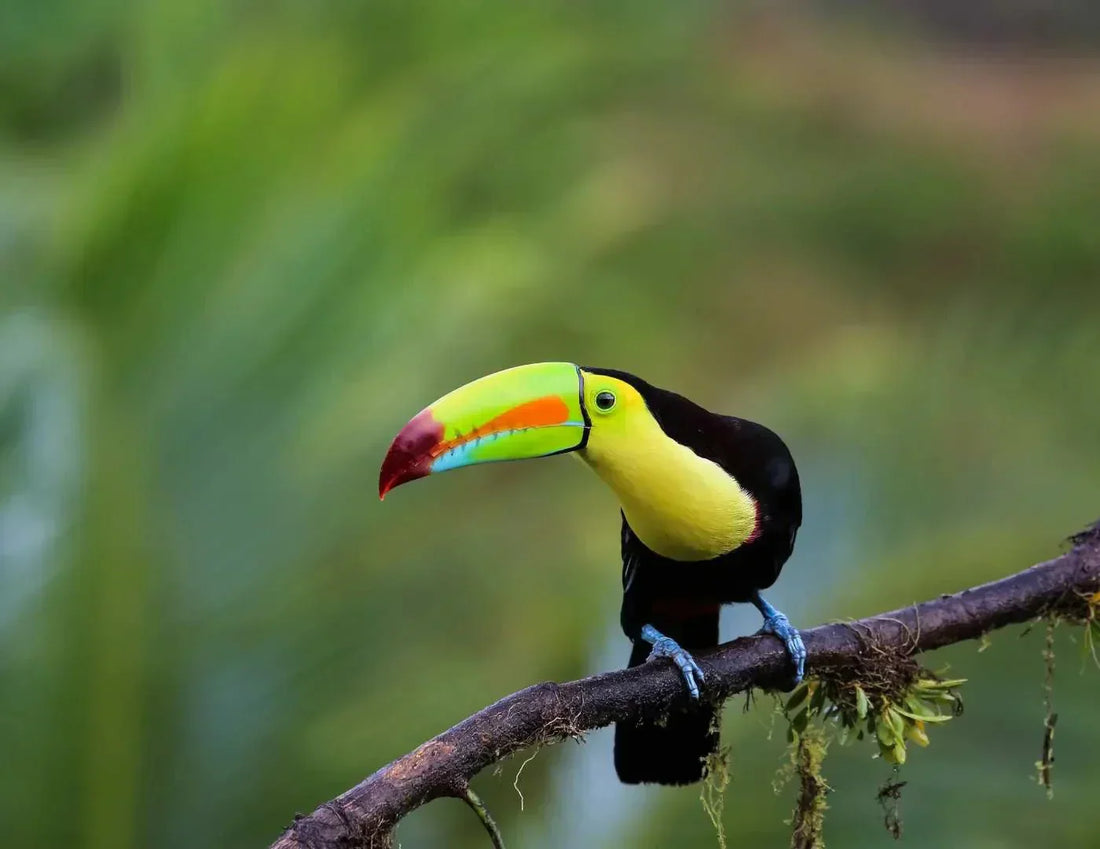
National Symbols of Costa Rica
BY NAMUBAKShare
Costa Rica is recognized worldwide for its impressive biodiversity and commitment to environmental conservation. This small Central American country is home to more than 4% of the planet's species, integrating nature as a fundamental part of its identity. It's no surprise that many of the national symbols are animals that represent Costa Rica's great diversity and natural beauty.
In this blog, we'll delve into the animals designated as national symbols and their significance for the country's cultural and ecological identity. These symbols not only represent Costa Rica's natural heritage but also reflect the rich relationship between Costa Ricans and their environment.
What Are the National Symbols of Costa Rica?
Costa Rica's national symbols represent the country's history, culture, and nature. They range from the flag and coat of arms to officially declared animals and plants. Each symbol tells a unique story about the nation's identity and is used in patriotic acts, official institutions, and government documents.

Importance of the National Symbols of Costa Rica
These symbols not only highlight national pride and cultural identity but also reinforce the country's commitment to preserving its natural heritage. Costa Rica has been a pioneer in environmental protection and the creation of protected areas, and these emblems reflect that spirit of conservation. Furthermore, the fauna and flora that represent the nation are illustrated on the banknotes, linking economic identity with ecological diversity.
National Symbols of Costa Rica
The Yellowthroat (Turdus grayi) – National Bird
The Yigüirro, also known as the Brown Blackbird , It was designated the National Bird of Costa Rica on January 3, 1977. This small bird is famous for its melodious song, which heralds the arrival of the rainy season. Its song has become a symbol of fertility and hope, especially for farmers who begin planting with the onset of the rains. Its name comes from the Huetar indigenous language and means “water pigeons,” reflecting the relationship between this species and the rain cycle.
The Yigüirro is not only notable for its beauty, but also for its influence on Costa Rican popular culture. It appears in poems, songs, and national folklore.

The White-tailed Deer (Odocoileus virginianus) – National Wildlife Symbol
The White-tailed Deer was declared a symbol of Costa Rican fauna on May 2, 1995. It lives in savannas and open forests, being more common in the Santa Rosa National Park , located in the province of Guanacaste. This deer is known for its agility and adaptability, characteristics that have made it a symbol of resilience and tenacity.
However, its population has declined due to illegal hunting and habitat loss due to gentrification in natural areas .

The Caribbean Manatee (Trichechus manatus) – Symbol of Marine Fauna
The Caribbean manatee was designated a symbol of marine fauna on July 15, 2014, thanks to an initiative led by students from a local school in Limón. Popularly known as the "sea cow," this mammal inhabits the canals of Tortuguero and Barra del Colorado.
Although its designation seeks to highlight the importance of conserving aquatic ecosystems, The manatee is in danger of extinction due to water pollution and maritime traffic that threatens its habitat. This symbol is a reminder of the need to protect Costa Rican marine fauna.

The Blue Morpho Butterfly (Morpho peleides) – Symbol of Lepidoptera Fauna
The Blue Morpho Butterfly was declared a national symbol in 2022. Its brilliant blue color and graceful flight make it an iconic symbol of Costa Rica. The butterfly is associated with purity, freedom, and the beauty of the country's tropical forests.
This insect not only attracts tourists, but also serves as a reminder of the need to protect natural habitats. The Blue Morpho butterfly lives in many ecosystems in the country, including humid forests and protected areas.

The Sloth (Choloepus hoffmanni and Bradypus variegatus) – Symbol of Wildlife
On July 14, 2021, the sloth was declared a symbol of Costa Rican wildlife. This animal, known for its slow movements and peaceful nature, has become one of the country's most iconic animals. There are two species in Costa Rica: the three-toed sloth and the two-toed sloth.
The sloth is a symbol of peace and harmony with nature, values that Costa Ricans promote in their environmental and social policies. Its conservation is an example of how the country prioritizes the protection of wildlife and biodiversity.

Animals on Costa Rican Banknotes
Each Costa Rican banknote depicts an ecosystem and an animal that symbolizes the country's natural wealth. For example:
- 1,000 colones banknote : Depicts the Tropical Dry Forest and has the Yigüirro illustrated.
- 2,000 colones banknote : It presents a coral reef with the Hawksbill Turtle.
- 5,000 colones banknote : Shows a Mangrove Ecosystem along with the White-Faced Monkey.
- 10,000 colones banknote : Depicts the Cloud Forest with the Quetzal.
- 50,000 colones banknote : The Páramo, a high mountain ecosystem, is illustrated.

These ecosystems highlight the diversity of flora and fauna, and underscore the need to conserve these environments for future generations.
A Legacy of Conservation and National Pride
Costa Rica has designated these animals as national symbols to protect its biodiversity and promote an identity based on harmony with nature. Each symbol is a reminder of the country's commitment to conservation and its role as guardian of some of the planet's most important ecosystems.

